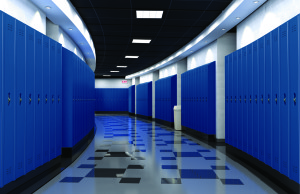How the 4 Phases of Emergency Management Should Guide Education Building Plans
When you build your school’s facility, it’s crucial to focus on emergency management, for the safety of the students who walk through the doors every day. Nobody likes the thought of an emergency taking place in a school, but it’s important to consider. You have to be as prepared as possible in order to take the right actions should an emergency occur. Emergency management should be at the forefront of your education building plans. The US Department of Education has broken emergency management in schools down into four separate parts. Learn more about what you can do to make sure you’re ready.
- Prevention-Mitigation: When creating the school, utilizing strategic design techniques can prevent or reduce damage. This can include making it more difficult for intruders to enter, or designing structures that can’t be damaged by the elements of weather.
- Preparedness: Safety features are necessary when building a school, such as a school-wide communication system. This can alert the school, faculty and students of an emergency and allow everyone to act accordingly.
- Response: This includes accessible floor plans that can make it easier for emergency responders to navigate the school site and reach people or areas in need. It can be difficult to figure out the layout of a building, especially one that’s large with reoccurring hallways. This could save a lot of time, as well.
- Recovery: In the event that there is an incident, the school must remodel and adapt in a way that addresses the issue and ensures that the same problem will not occur again.

Planning for Safe Products
Another way to ensure that your school is safe is to utilize safe products and materials throughout the facility. Learn more about what types of products will be safe for your students. HDPE Plastic: High Density Polyethylene (HDPE) reduces environmental impact and also offers initial and long-term improvements to the indoor air quality of your products.Materials in your facilities can also be damaging to your respiratory system and cause even more health problems in the long run, especially in young children. Choosing eco-friendly, sustainable products will improve the air quality rather than polluting it like other materials. HDPE plastic is also resistant to bacteria and mold growth which can be harmful to students’ health as well. HDPE exhibited no microbial growth during a 21 day testing period. Solid HDPE plastic materials do not absorb moisture, making them resistant to mold and mildew. The surface is non-porous so the growth of mildew cannot be supported. HDPE plastic partitions are also fully power washable and steam cleanable, so you can wash them without the need for harmful chemical cleaners. In addition, HDPE plastic materials are one solid colored material throughout. This means you don’t have to worry about painting. Your HDPE products deliver no VOC emission and are GREENGUARD GOLD During the construction process, make sure that safety is accounted for. Click here to find out where to buy Scranton Products for a safer school.

